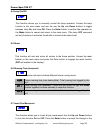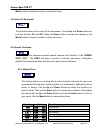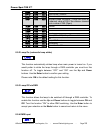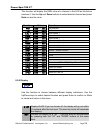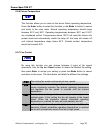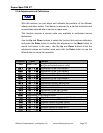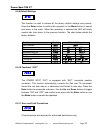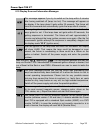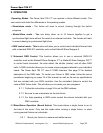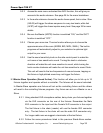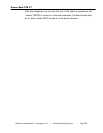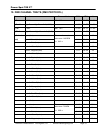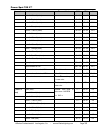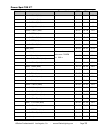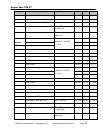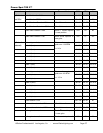
Power Spot 700 II™
©Elation Professionals® Los Angeles, Ca. - wwww.ElationLighting.com - Page 34
9. OPERATION
Operating Modes: The Power Spot 700 II™ can operate in three different modes. This
next section will detail the differences in the operating modes.
• Stand-alone mode - The fixture will react to sound, chasing through the built-in
programs.
• Master/Slave mode - You can daisy chain up to 16 fixtures together to get a
synchronized light show without the need of an external controller. The fixtures will react
to sound chasing to synchronized light show.
• DMX control mode - This function will allow you to control each individual fixtures traits
with a standard DMX-512 controller such as the Elation® Show Designer 2.
9.1 Universal DMX Control: This function allows you to use a universal DMX-512
controller such as the Elation® Show Designer 3™ or Elation® Show Designer 2CF™
to control head movement, the color wheel, the shutter (strobe), and all other DMX
traits. A DMX controller allows you to create unique programs tailored to your individual
needs. The Power Spot 700 II™ uses 21 DMX channels. See page 37 for detailed
description of the DMX traits. To control your fixture in DMX mode, follow the set-up
procedures beginning on page 19 of this manual as well as the set-up specifications
that are included with your DMX controller. Use the controller’s faders to control the
various DMX fixture traits. This will allow you to create your own programs.
9.1.1 Follow the instruction on page 24 to set the DMX address.
9.1.2 Be sure to use a terminator on the last fixture.
9.1.3 For help operating in DMX mode consult the manual included with your
DMX controller.
9.2 Stand-Alone Operation (Sound Active): This mode allows a single fixture to run to
the beat of the music. Only use this mode when running a single fixture, or when
running several fixtures as individuals.
9.2.1 Mount your fixture in a secure and stable manner.



